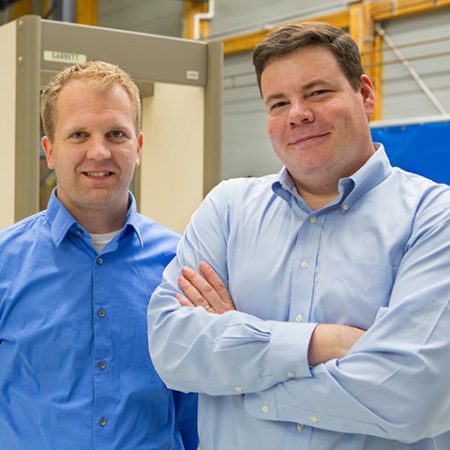
New research conducted at the Florida State University-based National High Magnetic Field Laboratory has revealed a new, innovative way to classify the severity of a stroke, aid in diagnosis and evaluate potential treatments.
“Stroke affects millions of adults and children worldwide,” said Sam Grant, MagLab researcher and associate professor of chemical and biomedical engineering at the FAMU-FSU College of Engineering. “This research offers a new technique for the chemical analysis of metabolites during stroke and a means of evaluating dynamic changes in cell processes and size in living tissue.”
The research is detailed in two papers, “Metabolic properties in stroked rats revealed by relaxation-enhanced magnetic resonance spectroscopy at ultrahigh fields,” in Nature Communications and “Metabolic T1 dynamics and longitudinal relaxation enhancement in vivo at ultrahigh magnetic fields on ischemia” in the Journal of Cerebral Blood Flow and Metabolism.
The new technique is a way of narrowly applying energy to the metabolites of a specimen exposed to a very high magnetic field. Metabolites are the biological compounds used in the chemical process of breaking down food or other chemicals into energy and producing new materials.
By selectively “exciting” these metabolites and analyzing their distribution and confinement in brain tissue, the research team can investigate the metabolic microenvironment and tell whether cells were shrinking or expanding, a critical tool to understanding the severity of stroke, Grant said.
That information could help medical professionals better treat patients.
“Strokes cause an interruption of blood and oxygen to flow to the brain,” explained Jens Rosenberg, another MagLab researcher and one of Grant’s co-authors. “Through this research, we can see how neurons and other neural cells respond to the disruption of blood flow after stroke and use that information to better understand the full impacts of stroke.”
The MagLab’s flagship 900 MHz Ultra Widebore NMR magnet system was a critical component to the research. Utilizing this powerful magnet, the research team, which included scientists from the Champaulimod Center in Portugal and the Weizmann Institute of Science in Israel, were able to acquire localized chemical signatures of metabolites from 125-microliter volumes within the brain with high sensitivity and fidelity in six seconds.
Typical MRIs at hospitals or doctor’s offices measure around 1.5 – 3 tesla (the unit of magnetic field strength), while the 900 MHz measures a whopping 21.1 tesla, providing at least seven times the sensitivity.
“This very high field coupled with the RF pulse sequence design by our collaborators and homebuilt RF probes offer a unique non-invasive way of evaluating stroke evolution and potential treatments,” Rosenberg said.
The team also sees exciting possibilities to use this technique to further investigate debilitating diseases.
“By evaluating spectral regions previously undetectable, we hope to fingerprint certain diseases, like ischemic stroke, so that we can identify new characteristics that are specific to pathological conditions at the metabolic level in vivo,” Grant said. “There is a lot of work to be done to identify these dynamic changes and decide when and how our treatments can be most effective.”
Further research on metabolites using this technique could also be used for analysis of neurological disorders such as dementia, schizophrenia, Lou Gehrig’s, Parkinson’s, Alzheimer’s and Huntington’s diseases.
In addition to Grant and Rosenberg, co-authors of the papers include MagLab engineer Jose Muniz and Chief Scientist Lucio Frydman. Lead author Noam Shemesh, now at the Neuroscience programme at the Champaulimod Center, and Jean-Nicholas Dumez contributed as researchers in Frydman’s laboratory in the Department of Chemical Physics at the Weizmann Institute of Science.
This highly collaborative effort was made possible through the MagLab’s users program and was recently funded through the NSF-NHMFL User Collaboration Grants Program. Researchers intend to continue to characterize the metabolic profiles of disease evolution and use such information to evaluate treatments, including stem cell therapies.




